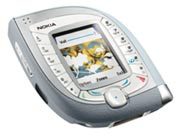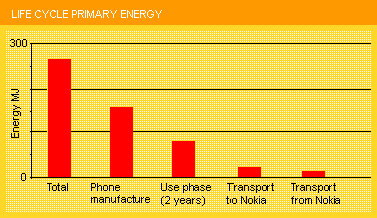|
 |
|
"The challenge is to design products that last longer, are lower cost to recycle, affordable to the consumer, use less waste energy and are produced in an environment that is environmentally friendly."
Uwe Hennack
- CEO Bosch Siemans Homes Appliances Ltd
|
|
|
 |
|
|
Case study snapshot
|
|
Life cycle assessment of 3rd generation NOKIA handset focused on the mobile phone Nokia 7600. The purpose of this study was to update Nokia's understanding of the key environmental burdens of a mobile phone during its life cycle.
|
 |
 |
The use phase was assumed to be two years. The study covers the life cycle stages of raw materials and production up to factory gate, product use phase and transport steps from first-tier component supplier to Nokia assembly plant, and from Nokia factory to first customer point. Excluded from the scope were product sales, packaging and the product end-of-life stage.
|
The results show that the life cycle stages with highest energy burden are production and use phase. The raw materials, manufacturing of components and final product account for 60% of the total energy burden. The use phase accounts for approximately 30%, while transportation accounts for approximately 10%. In the raw materials and manufacture phases, the electronics components dominate, while the phone charger and battery account for 13% of the overall energy burden.
|
These studies enable designers to make design improvements throughout the life cycle. Moreover, they can help understand relative impacts over time and across product ranges and help position environmental impacts relative to competitors' products.
Source: (McLaren and Piukkula, 2004)
|
|
 |
BACK TO TOP
|
|
 |
| FACTS & FIGURES |
 |
|
|
|
 |
More than 90% of the waste in the life cycle of a mobile phone is generated at the raw-material stage.
|
 |
A typical microwave will use more power illuminating its digital clock over its lifetime than it will actually cooking food.
|
 |
Manufacturing just one 32MB RAM module requires 32kg of water, 1.6kg of fossil fuels, 700g of gases and up to 72g of different chemicals.
Source: United Nations University, Tokyo
SEE MORE FACTS & FIGURES
|
|

